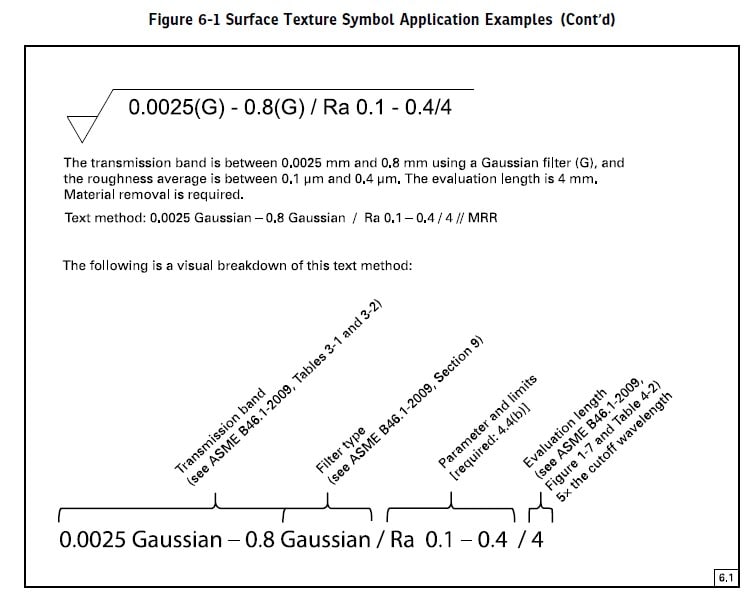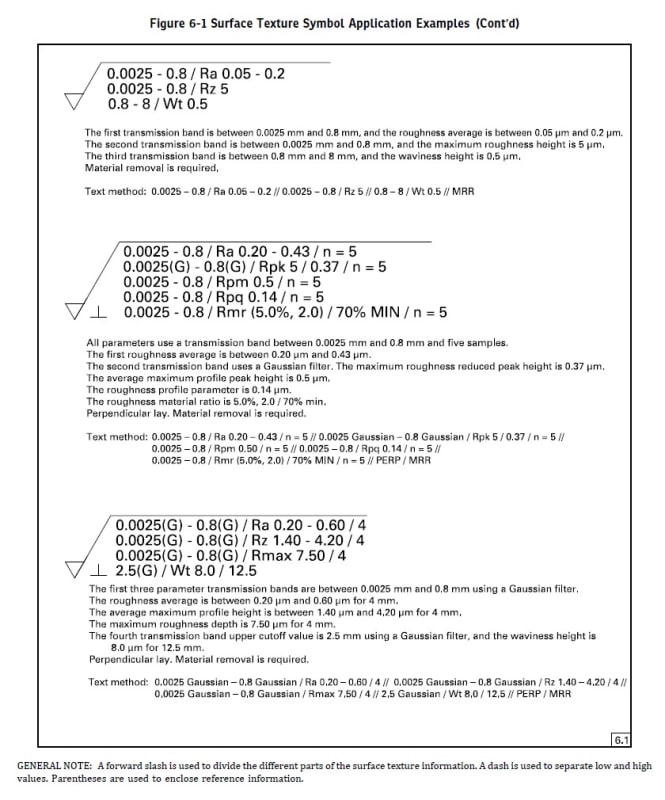-
1
- #1
Hi all,
My question is about implementation of ASME Y14.36 or the parallel ISO standard for surface texture requirements specification. ASME B46.1 lists some acceptable cutoff length values for measurement purposes - 0.08, 0.25, 2.5, 8 mm. In the same standard there is also some guidance on evaluation of cutoff length values for roughness based on the unfiltered as produced profile when the values are not stated on the drawing, but ever since the 1996 version of ASME Y14.36 it is required to state the cutoff on the drawing. My question is, how should the designer decide on the values and how can he be sure the values he chooses will allow proper filtering to get a representative roughness or waviness profile? If I understand this correctly, once the values are in the surface texture symbol on the drawing, the inspector is no longer responsible for finding the best values for the filtering? Is there some guidance for the designer on this based on the process and the workpiece material or anything alike?
My question is about implementation of ASME Y14.36 or the parallel ISO standard for surface texture requirements specification. ASME B46.1 lists some acceptable cutoff length values for measurement purposes - 0.08, 0.25, 2.5, 8 mm. In the same standard there is also some guidance on evaluation of cutoff length values for roughness based on the unfiltered as produced profile when the values are not stated on the drawing, but ever since the 1996 version of ASME Y14.36 it is required to state the cutoff on the drawing. My question is, how should the designer decide on the values and how can he be sure the values he chooses will allow proper filtering to get a representative roughness or waviness profile? If I understand this correctly, once the values are in the surface texture symbol on the drawing, the inspector is no longer responsible for finding the best values for the filtering? Is there some guidance for the designer on this based on the process and the workpiece material or anything alike?




